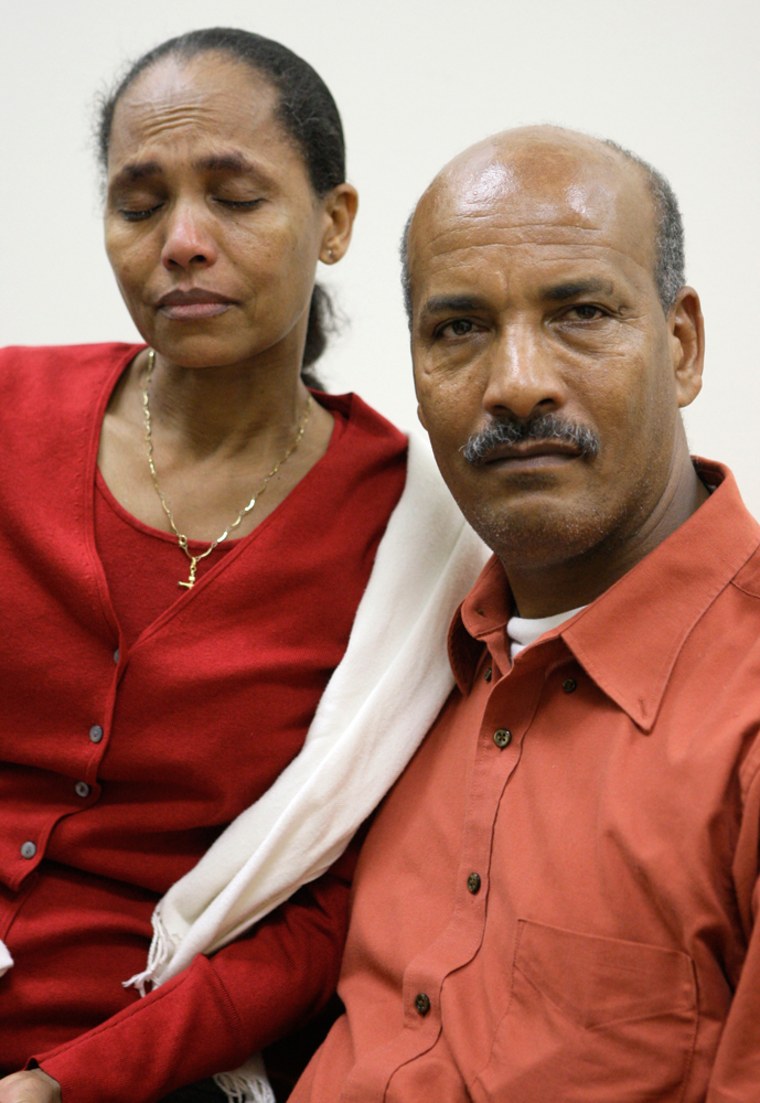Despite the rise of DNA fingerprinting and other "CSI"-style crime-fighting wizardry, more and more people in this country are getting away with murder. FBI figures obtained by The Associated Press show that the homicide clearance rate, as detectives call it, dropped from 91 percent in 1963 — the first year records were kept in the manner they are now — to 61 percent in 2007.
Law enforcement officials say the chief reason is a rise in drug- and gang-related killings, which are often impersonal and anonymous, and thus harder to solve than slayings among family members or friends. As a result, police departments are carrying an ever-growing number of "cold-case" murders on their books.
"We have killers walking among us. We have killers living in our neighborhoods," said Howard Morton, executive director of Families of Homicide Victims and Missing Persons. "It is a clear threat to public safety to allow these murders to go unsolved."
The clearance rate is the number of homicides solved in a year, compared with the number of killings committed that year. The solved killings can include homicides committed in previous years.
Homicides climb
The number of criminal homicides committed in the U.S. climbed from 4,566 in 1963 to 14,811 in 2007, according to the FBI. The clearance rate has been dropping pretty steadily over the past four decades, slipping under 80 percent in the early 1970s and below 70 percent in the late 1980s. In cities with populations over 1 million, the 2007 clearance rate was 59 percent, down from 89 percent in 1963.
Detectives say homicides generally become harder to solve as time goes by, as witnesses die and memories fade. Yet cold-case detectives say their units are often understaffed. And local police are getting less help for cold cases from Washington. Funding for the main federal program for such cases was cut 40 percent from 2005 to 2007.
Richard Walton, author of "Cold Case Homicides: Practical Investigative Techniques," attributed the falling clearance rate to a "significant change in crime patterns."
Indiscriminate killing
Many slayings nowadays are gang- and drug-related killings — often, drive-by shootings that involve a burst of gunfire so indiscriminate that killer and victim don't know each other.
"And that makes it difficult for investigators," Walton said. "With the gangs and the drugs, we don't have that ability to establish motive, opportunity and means."
Research suggests that in about 70 percent of homicides during the 1960s and '70s, victim and killer knew each other, Weston said. He said that figure has dropped since then, though he would not hazard a guess as to how much.
Witnesses scared
Also, gang-related killings are increasingly going unsolved because witnesses are too scared to help police, said Dallas Drake of the Center for Homicide Research, a Minneapolis-based nonprofit organization. Gangs have played on people's fears by warning them — via underground DVDs, in some cases — against "snitching."
In the Chicago suburb of Aurora, local and county authorities are working with the FBI on a cold-case program to battle the perception that gang members are untouchable. So far, there have been more than 30 arrests and at least five convictions.
Among the unsolved killings in Chicago is the 2003 drive-by shooting of 19-year-old Filmon Tesfai, an aspiring doctor who was gunned down two days before he left for the University of Illinois. Police say that the slaying was probably a case of mistaken identity and that Tesfai did not know his killer.
"This is not an easy thing to carry in your head," said his father, Zerai Tesfai. "It's the worst thing that's happened in my life."
DNA has clearly revolutionized crime-fighting, enabling police to solve decades-old crimes. Walton pronounced it "arguably the greatest identification tool to come down the pike." Police are also using other sophisticated forensic techniques, including digital fingerprint matching and high-tech bullet-fragment analysis.
Nevertheless, DNA and other physical evidence solve only about 30 percent of cold cases, said James Adcock, assistant professor at the University of New Haven in Connecticut. Finding witnesses and getting them to talk still plays a major role.
Technology: Blessing and curse
In fact, detectives warn that technology can be both a blessing and a curse, saying jurors who have watched shows like "CSI" come into court with unrealistic expectations of what science can do.
"They think we can pull a rabbit out of our hats," said Houston police Sgt. Mike Peters. "Technology is great, but it's the ability to get people to talk that's important. That solves cases."
Technology can also be expensive. In 2005, the National Institute of Justice awarded $14.2 million to law enforcement agencies through the Solving Cold Cases With DNA program. In 2007, only $8.5 million was awarded. No grants were given in 2006.
Lt. John Slenk of the Michigan State Police said it took a couple of million dollars to solve the 1979 murder of Hope College student Janet Chandler in 2006. Those costs included the salaries of four full-time officers over three years and the interviewing of 500 people in 18 states.
Six people are serving time in Chandler's murder. Since there was no DNA that could be used, solving Chandler's murder came down to wearing down witnesses and suspects. Detectives interviewed their prime suspect 18 times before he was arrested, Slenk said.
For their part, the Tesfais have not given up hope that police will find their son's killer. They are frustrated those responsible are walking free.
"They are breathing fresh air. My son is underground," Zerai Tesfai said. "Someone, somehow, has to make a closure for this."
